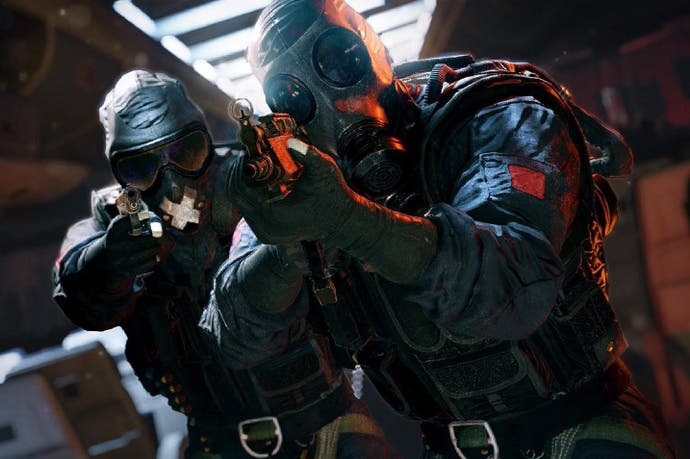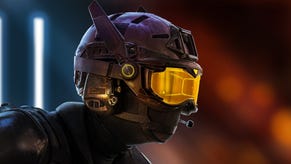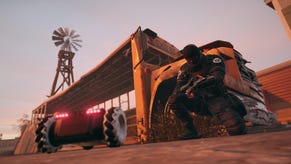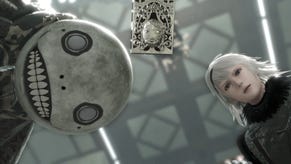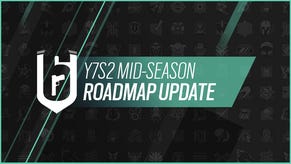Face-Off: Rainbow Six Siege
Not just a superb multiplayer game, but a fascinating tech showcase too.
Emerging from the ashes of the cancelled Rainbow Six Patriots, Ubisoft's latest entry in the franchise has finally arrived as Tom Clancy's Rainbow Six Siege on Xbox One, PS4, and the PC. It's a tactical multiplayer shooter built on Ubisoft's AnvilNext engine offering a selection of subtly beautiful, realistic locales ripe for action. The fact that a small scale, tactical first person shooter has been created using technology designed for large scale open world games is surprising but the results are excellent. The benefits of AnvilNext are abundantly clear with very natural lighting and realistic materials throughout each map. Rainbow Six Siege is not an inherently flashy game, but if you stop and look around its environments, there is a lot of beauty to appreciate. Many of the interiors sport very natural indirect lighting along with realistic stone and metal work reminiscent of the gorgeous Assassin's Creed Unity.
The real star of the show here is Realblast - this technology enables fully destructive environments on a micro scale. Rather than leveling whole buildings a la Battlefield, players are instead able to procedurally destroy structures piece by piece. You can chip away at drywall with a pistol, blow holes in the floor beneath your enemy with a shotgun, or simply plant an explosive charge and blow down an entire barricade. Bullet penetration is also in full effect here and the sound effects of rounds piercing different surfaces vary greatly based on material composition.
This technology truly changes the game here and leads to one of the most dynamic shooters we've ever played. It's fascinating to see the ways in which this can be used. Popping holes in the ceiling to monitor an entrance, taking out enemies through the wall while hanging upside down from the roof, or simply confusing the enemy by triggering simultaneous explosions around them. Even when it felt as if we had a grasp of the basic strategy for a map, we were regularly surprised by what creative players could pull off. Crucially, Realblast is present and accounted for in all three versions of the game but how do the rest of the visuals stack up?
Image quality is typically a pretty cut and dried affair but we see an interesting trick employed here that enables stable performance with a minor compromise to image quality. At its core, the PS4 version operates at 1080p while the Xbox One is 900p - but that's not the whole story. Ubisoft makes use of a "temporal filtering" feature that has a pretty interesting impact on the game.
Essentially, this feature renders the game with half the number of pixels on each axis with an ordered grid MSAA pattern before reconstructing the image to match the final output. This is then coupled with a post-process temporal anti-aliasing solution to minimize artefacts in motion. So, at 1080p, we're technically seeing 960x540 with 2x MSAA. Interestingly, it would appear that the image is processed before being upscaled on Xbox One resulting in blurrier HUD elements and menu text.
This trick has its drawbacks, but when combined with temporal AA, it helps produces a soft yet stable image in motion. If you slowly pan the camera around you can certainly spot edge artefacts but, during normal gameplay, this is much less apparent. The resulting image is actually more temporally stable than many other console titles. It's a fantastic trade-off here that really helps keep performance up without a significant impact on image quality.
On the PC, this option is available and actually rather useful as well. The trusty GTX 780 used in our test machine on this project isn't quite up to the task of driving the game at 1440p60, but with temporal filtering, it works brilliantly. The same caveats are in place on the PC, of course, but the end results are certainly more attractive than simply upscaling from 1080p. That said, we recognise that a number of PC gamers suffer from a severe allergic reaction to any amount of blur in their image so it should be noted that Ubisoft provides seven possible anti-aliasing selections to customize the image. You have two levels of MSAA, two levels of TXAA (for Nvidia owners at least), FXAA, the custom temporal AA, and the temporal filter. All of these can be combined for different results but, rest assured, it's absolutely possible to achieve a razor sharp image.
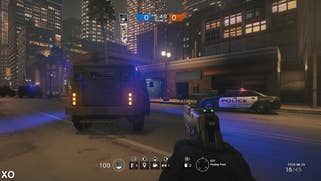
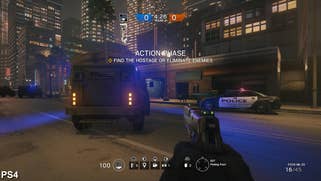
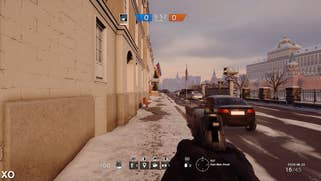


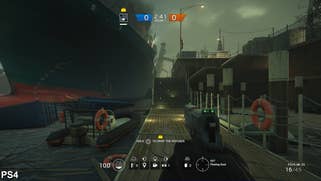
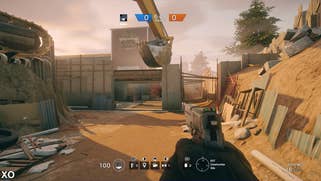
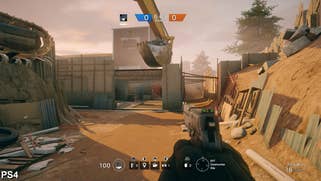
As for texture filtering, we actually see a clear improvement over the pre-release beta version of the game. When we first looked at Siege, it was discovered that the PS4 version was lacking anisotropic filtering completely. In the final game, this has been corrected and both versions sport 8x anisotropic filtering. When combined with the aforementioned anti-aliasing solution, the game looks very smooth and clean on both platforms.
When it comes to performance, Rainbow Six Siege actually operates with two different targets on consoles. The player vs player action is updated at a full 60 frames per second while modes with AI opponents enabled are dropped to 30fps instead. This is coupled with an adaptive v-sync solution that introduces torn frames along the top portion of the image. This limitation is not present on the PC, of course.
Both console versions manage to hold 60fps the majority of the time but we did encounter some drops in certain situations. Performance dips tend to crop up either at the beginning of a map during the outdoor infiltration sequence, particularly at night, or while engaged in a firefight with plenty of destruction and alpha effects visible on screen. That said, it's entirely possible to play through a number of matches without a single hitch in performance. In comparison, the terrorist hunt and single player modes all turn in a very steady 30fps throughout our testing.
Outside of resolution, there is little here to tell the Xbox One and PlayStation 4 versions of the game apart. Both versions appear to use identical settings and, thanks to the temporal filtering, both look very clean in motion. So the question that remains is how well the console versions stack up against the PC version. To better understand this we've decided to break out the individual PC settings and examine each one by one.
Shading Quality: This setting impacts lighting, shading, and the interaction of light and materials. Console versions operate with the medium setting but the high setting on PC brings a number of improvements, the most notable of which is the addition of relief mapping which adds extra depth to textures using a heightmap. On PC, the performance impact increases alongside texture filtering. So while 16x AF normally incurs a very small hit to performance on the platform that's not the case here. Essentially, when using higher levels of filtering with the high shading settings, relief maps are drawn out further from the viewport. This texture information is not present in distant mip-maps though, so by reducing texture filtering quality the distance in which the relief maps are rendered is decreased.
Ambient Occlusion: To handle contact shadows, Ubisoft has crafted its own solution known as SSBC, which first appeared in Far Cry 4 last year. This solution is used on consoles and it generally looks very good. SSBC tends to produce slightly darker contact shadows that can actually look more aesthetically pleasing in certain circumstances but there are still some inaccuracies in detailed, brightly lit scenes. This is where HBAO+ comes into play on the PC which produces a different look that is technically more accurate.
Shadow Quality: There are four different settings for shadow quality on the PC and we've found the console versions to be a match for the high setting. On medium and low, shadows lose a tremendous amount of definition but the high setting is still very clean. Using the very high option on PC simply pushes the resolution of shadows up a notch resulting in additional clarity. We feel that shadow quality is solid across all three versions of the game.

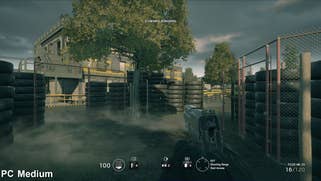

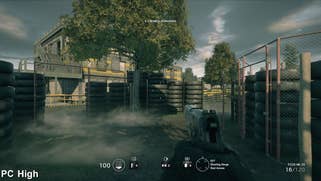
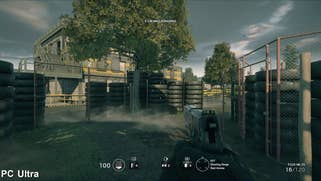

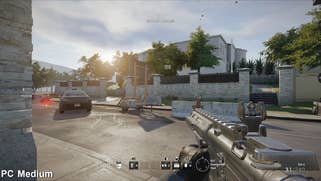

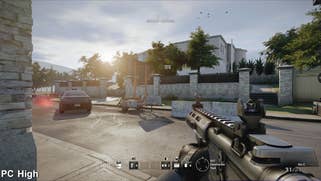

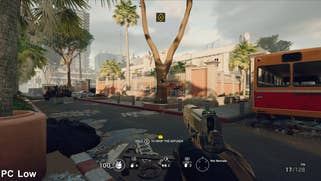
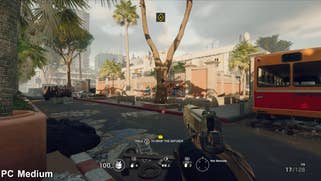
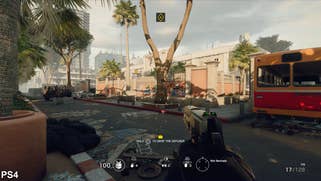
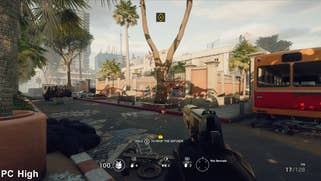

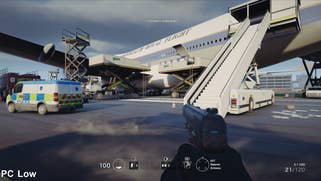

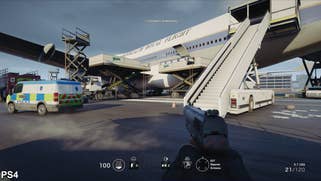


Reflection Quality: With reflection quality we see consoles operating at medium settings. Siege uses a combination of cube-map and screen-space reflections throughout its environment to great effect. The high setting simply impacts the resolution and accuracy of the screen-space reflections used in a number of environments. On medium, we still see SSR used throughout the game, but there is a noticeable drop in quality. When using the low setting, only cube-map reflections are displayed.
Texture Quality: Then we have texture quality and here we believe the console versions are operating with the high setting. When comparing medium to high we can see a noticeable drop in asset clarity in test screens. On the PC, increasing texture quality ups the VRAM requirements so those with less GPU memory available can stick with medium and low settings in order to avoid hitching issues. The improvement in detail when using the highest setting on the PC is subtle, but at higher resolutions, definitely improves visual quality. When coupled with the aforementioned height maps, there's little doubt that the PC takes the lead here.
Lens Effects and Zoom-in Depth of Field: These two settings available in the PC version appear to have little to no impact on performance and are both present in the console releases. The lens effects essentially consist of light bloom and the dirty screen effects when the screen passes in front of high intensity light sources. Depth of field is applied to the player weapon while aiming down sights. We do appreciate the inclusion of these options as effects like this are not something all gamers appreciate and choice is exactly what PC gaming is all about.
LOD Quality: At first glance, it's nearly impossible to tell the various settings apart. However, when looking more closely at the game in motion, it becomes evident that the console versions are at least using the high setting. Essentially, the low and medium settings reduce the quality of the skybox replacing the dynamic sky with a static one instead. As the dynamic skybox is present on consoles, it stands to reason that the high or above settings are used here. The difference between high, very high, and ultra is extremely minimal, however, and the impact on performance is somewhat minimal.
Rainbow Six Siege - the Digital Foundry verdict
Ultimately, when you first start playing the game, Rainbow Six Siege can seem underwhelming visually. If you give it time, however, you'll find a beautiful package within. While playing Siege we could help but think of the game as a next-generation take on FEAR - at least visually. The realistic locales, clean lines, and focus on destruction all take those concepts to the next level and it looks glorious.
These visuals also tie directly into the game itself. People often ask "what is next-generation gameplay?" and in this case, one could certainly make an argument for Rainbow Six Siege. In many ways, this feels like a next generation take on Spies versus Mercs mode in Splinter Cell: Pandora Tomorrow with some classic Rainbow Six mixed in for good measure. It's tactical, it's intense, and it's visceral.
It's a game that has been well optimised for each of the three platforms as well. If you have the choice, then the PS4 version comes out on top due to its higher resolution and slightly faster performance. That said, both console versions are solid performers and we have no issue recommending either version. Of course, the PC version offers the expected leap in visuals and even the option to play via a local area network rather than relying solely on Ubisoft's servers, making it an even better choice. Regardless of your preferred platform, we certainly encourage players looking for something beyond the typical multiplayer shooter to give this a look.
